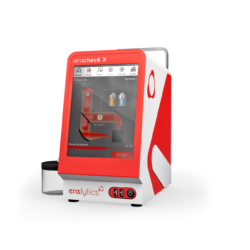Facts about the ASTM D7678 Standard Test Method
The ASTM D7678 standard test method measures Total Petroleum Hydrocarbons (TPH) in Water and Wastewater with Solvent Extraction using Mid-IR Laser Spectroscopy. The public has an interest in the presence and concentration of total petroleum hydrocarbons in domestic and industrial wastewater. Those substances, as well as oil and grease, have a deleterious aesthetic effect and impact on aquatic life. Therefore regulations and standards have been established. They require monitoring of total petroleum hydrocarbons as well as oil and grease in water and wastewater.
The ASTM D7678 test method covers the TPH-determination in water and waste water. The Hydrocarbons must be extractable
from an acidified sample with a cyclic aliphatic hydrocarbon and are measured by IR absorption in the region of 1370 -1380 cm-1
or 7.25 -7.30 microns. (Andreas Schwarzmann, R&D)
In contrary to gravimetric methods, ASTM D7678 also considers the volatile fraction of petroleum hydrocarbons. Furthermore, a more complete fraction of extracted petroleum hydrocarbon is accessible by this method as compared to GC methods that use a time window for quantification. The reason for that is that petroleum hydrocarbons eluting outside these windows are also quantified. ASTM D7678 covers a range of 0.5 to 1000 mg/L. It also may be extended to a lower or higher level by extraction of a larger or smaller sample volume collected separately. Since 2011, the CFC-free ASTM D7678 test method replaces ASTM D3921, which was withdrawn in 2013.

